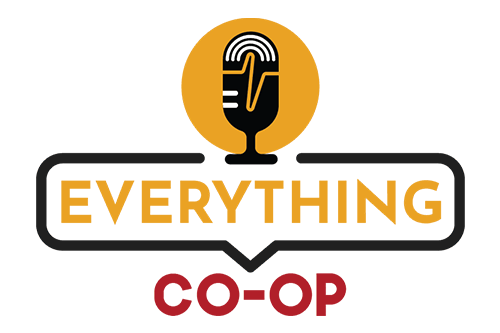The Hanover Co-op has earned top recognition from the Environmental Protection Agency (EPA) for its work reducing refrigerant emissions. Among the 10,800 GreenChill Partnership grocery stores in the U.S., the Hanover Co-op Food Stores has recorded the greatest improved emissions since joining the partnership (82.9 percent reduction since 2011), as well as the most improved emission rate from the previous year (a 77.4 percent reduction from 2015 to 2016).
According to the EPA, a typical supermarket leaks about 1,000 pounds of harmful refrigerant gas into the atmosphere every year. The primary focus of EPA’s GreenChill program is the reduction in use and leaks of environmentally harmful refrigerants commonly found in store coolers and freezers. Many of the refrigerants used by supermarkets are hydrofluorocarbons (HFCs), a class of potent greenhouse gases that contribute to climate change when leaked into the atmosphere. Among EPA partner-stores, there is no shortage of collaboration between supermarkets that might normally be competing for food sales.
“We’re all in this together,” said Hanover Co-op Facilities Manager Tom Guillette. “The team at our co-op has made massive improvements to our systems. We’re saving money, helping the planet and we’ve even hosted webinars to share our knowledge with big grocery chains and other co-ops,” he said.
The Hanover Co-op was the first food cooperative to join the GreenChill Partnership.
“The Hanover Co-op should be applauded for significantly reducing the emission of refrigerants from their coolers and freezers,” said Tom Land, manager of EPA’s GreenChill program. “They are demonstrating what is possible through good management of refrigeration systems and saving the co-op money.”
GreenChill partners in the retail food business have refrigerant emissions rates nearly 50 percent lower than the EPA-estimated industry average. If supermarkets nationwide reduced emissions to the current GreenChill Partner average—currently 13.9 percent—they could generate annual cost savings of over $200 million across the industry, while preventing the annual emission of 29 million metric tons of carbon dioxide equivalent and 151 ozone depletion potential (ODP) tons. The Hanover Co-op’s current emission rate is 9 percent.
Leaks are typically caused by aging equipment and miles of high-pressure, closed-loop tubing that suffers wear and tear during thousands of hours of operation. Each time the system compressors start (hundreds of times per day), the plumbing vibrates and chafes against the cases. Over time, holes wear into the piping causing loss of refrigerant and products.
“Before we joined GreenChill,” Guillette said, ‘it was not uncommon to have emission rates of 50 percent across our organization, downtime of days and related costs exceeding $300,000 per year in repairs and refrigerant. Because part of our co-op’s mission is to protect and restore the environment, we got busy—fast.”
In addition to the diligence of co-op staff members, improvements came from annual planning and steps taken by Guillette’s team. Over the past five years, as capital expenditures were budgeted, meetings included refrigeration as a high priority. As the co-op slowly began to upgrade each of its locations, over time, the team made the following upgrades:
- New Hussmann Protocol high-efficiency refrigeration systems placed in the White River Junction, Vermont store;
- a completely new system installed during the Hanover, New Hampshire store’s renovation, including state-of-the-art rooftop Trillium condensers from Baltimore Air Coil that are approximately 60 percent more energy efficient than conventional condensing units;
- replacement of single-unit rooftops that used high ozone-depleting and high global-warming potential refrigerants with new units and safer refrigerant;
- replaced numerous medium temperature cases with ones featuring sealed doors;
- and upgraded the co-op’s Danfoss monitoring systems so that any change in case temperature pressures and equipment failures will be messaged directly to the facilities department.
Hanover Co-op General Manager Ed Fox credits his team with taking the long view on the effort. “I admire the way Tom and his crew have remained committed to this effort. We saw big improvements after the first year,” he said. “Yet, the real payoff for our member-owners comes from relentless pursuit over time. It really has been a big team effort for folks throughout our business. It improves our co-op, our community and the environment, and it feels especially nice to have the Environmental Protection Agency recognize the team’s hard work.”
EPA’s GreenChill Partnership works with supermarkets to reduce refrigerant emissions and decrease their impact on the ozone layer and climate change. The partnership provides information and assistance to help supermarkets transition to environmentally friendlier refrigerants; reduce harmful refrigerant emissions; and adopt green refrigeration technologies, strategies and practices. For more information on EPA’s GreenChill Partnership, including its store certification program, please visit www.epa.gov/greenchill.


